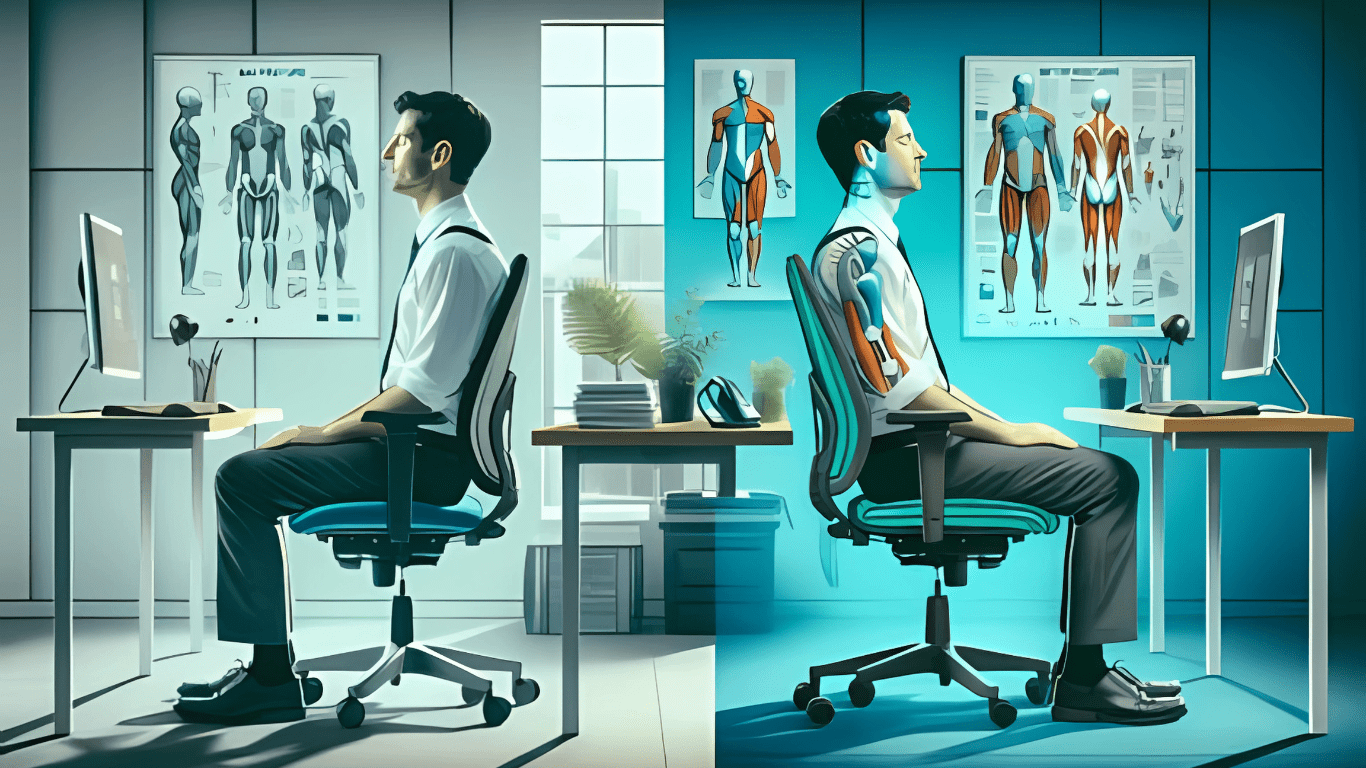Sitting in front of a computer or attending meetings for hours on end, many of us spend hours on end perched comfortably in an office chair. While it’s obviously very handy and efficient, working in an office, lots of people sitting on their desks experience a major drawback-known as “Office Chair Butt.” It is a sharp pain in the seats or discomfort, flattening of the glutes, and, rarely, even muscle soreness. The problem can affect both physical and efficiency levels. In the following article, we will be able to define what “Office Chair Butt” is, why it happens, and, most importantly, how to prevent it.
What is “Office Chair Butt”?
“Office Chair Butt” is a colloquialism that refers to the physical change and discomfort caused by sitting for too long, especially on the gluteal (buttocks) region. The following are some symptoms associated with this condition that people spend most of their day sitting in an office chair may experience:
Even the hollow of the cheeks starts to become flat, at least to some extent, due to chronic sitting. Similarly, prolonged sitting can make the muscles weaken in the buttocks causing it to become flat over time.
Numbness or pain: Prolonged sitting tends to decrease blood flow into the glutes and also to the lower back, hence numbness, tingling, and discomfort.
In short, “Office Chair Butt” is a result of poor postures and the biomechanical implications of immobility, particularly long hours of sitting without compensatory exercise or movement.
The Causes of “Office Chair Butt”
Sitting for an excessive amount of time, particularly in a static slouching position, creates several conditions that cause “Office Chair Butt.”
1. Gluteal Inactivation
Other muscles, like glutes, lie idle during these activities. Weakness due to prolonged idleness can further lead to muscle atrophy. The glutes need regular engagement with the individual’s standing, walking, or exercise routine; otherwise, they will flab out and lose their power, leaving behind the “pancake butt” most office workers complain of.
2. Tight Hip Flexors
Sitting for long periods of time tightens and shortens the hip flexors-the muscles that connect your thighs to your pelvis. This tightness pulls the pelvis out of alignment, causing discomfort in the lower back and hips that increases “Office Chair Butt.”
The Health Effects of “Office Chair Butt
Apart from its aesthetic effect of flattening or weakening the back, “Office Chair Butt” may have more devastating health and well-being implications. Some of these include:
1. Lower Back Pain
The glutes are weakened through long periods spent sitting, with tight hip flexors that put more pressure onto the lower back. It often leads to chronic back pain among those who sit at an office for most of their working hours.
2. Reduced Locomotion
When the muscle groups encircling your hips and lower back tighten and are weakened, your entire motion range will be reduced. Your flexibility and mobility may seem challenging for you in performing such common daily activities as bending or lifting or just walking around.
3. Poor Posture and Alignment
Weakened glutes can also lead to poor pelvic alignment and, subsequently contribute to posture problems. Eventually, this will then lead into exaggerated lordosis at the lower back or even worse, contribute to other postural problems including rounded shoulders and forward head posture.
4. Poor Athletic Performance
Office Chair Butt” affects those people, who have their favorite workouts or sports outside of work. Therefore, if the glutes are weak, then the movements like running, jumping, or squatting will lose their strength and power. This hinders easier workout, raising a tendency of getting hurt.
Prevention and Reversal of “Office Chair Butt”
Fortunately, “Office Chair Butt” is preventable and, in most cases, reversible if done correctly. Here are several methods to counteract the effects of prolonged sitting as well as maintain your glutes and posture in top form.
1. Take Regular Breaks
Another simple way to prevent “Office Chair Butt” is to get up from sitting for breaks. Set an alarm to remind you every half hour to stand up, stretch and move. Even a few steps around the office or some light stretches will get the blood flowing and energize the muscles in your lower body.
2. Do Glute Strengthening Exercises
The inclusion of exercises that strengthen the glutes could potentially help reverse the weakening impact of lengthy sitting. These include, but are not limited to:
Glute bridges: While on your back, bend the knees. Place your feet flat on the floor. Squeeze your glute muscles and then press your hips upwards toward the ceiling, then lower them down again.
Squat: Stand with your feet hip-width apart, mimic lowering your body into a chair, and then extend it back up to the standing position, squeezing your glutes hard at the peak contraction.
Lunge: Stepping forward with one leg, lower your body down into lunge position with a strong posture, press back up to standing, and remain contracting those glutes throughout the movement.
3. Stretch Your Hip Flexors
This can be achieved by doing regular stretches against the tight hip flexors. One can stretch out the hip flexors by their lunge stretch or pigeon pose to enhance their flexibility and movement in the hips.
4. Change Your Office Setup
Good workstation setup contributes much to preventing bad posture and all the pitfalls of sitting. Your office chair must support the lower back while encouraging good posture. You can also acquire a standing desk or an ergonomic chair to encourage movement and proper alignments outside work.
5. Be Active at Work
Besides breaking up the day to take regular breaks, it is equally important to be active outside of work. Lower body-exercise routines such as walking, running, or cycling will ensure that your glutes stay in shape and have some mitigation effects of sagging due to long hours in chairs.
Conclusion
“Office Chair Butt” has become all too familiar to many modern office workers, but prevention and reversal are possible when one becomes aware of and employs the proper methods. Keep taking those breaks, do strengthening exercises with stretching, and get your workstation setup adjusted to keep those glutes tight, back straight, and the whole body in tip-top condition. Don’t let this long time spent sitting ruin your body-try these suggestions in practice today and goodbye forever to “Office Chair Butt”.







